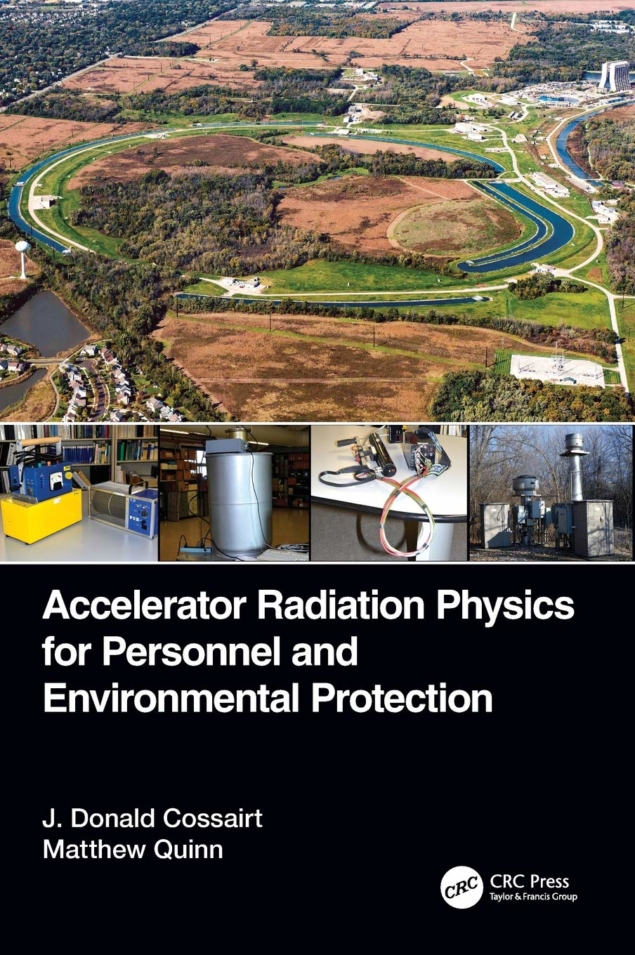Accelerator Radiation Physics for Personnel and Environmental Protection, By J. Donald Cossairt and Matthew Quinn, CRC Press

Don Cossairt and Matthew Quinn’s recently published book summarises both basic concepts of the propagation of particles through matter and fundamental aspects of protecting personnel and environments against prompt radiation and radioactivity. It constitutes a compact and comprehensive compendium for radiation-protection professionals working at accelerators. The book’s content originates in a course taught by Cossairt, a longstanding and recently retired radiation expert at Fermilab at numerous sessions of the US Particle Accelerator School (USPAS) since the early 1990s. It is also available as a Fermilab report which has stood the test of time as one of the standard health-physics handbooks for accelerator facilities for more than 20 years. Quinn, the book’s co-author, is the laboratory’s radiation-physics department manager.

The book begins with a short overview of physical and radiological quantities relevant for radiation protection assessments, and briefly sketches the mechanisms for energy loss and scattering during particle transport in matter. The introductory part concludes with chapters on the Boltzmann equation, which in this context describes the transport of particles through matter, and its solution using Monte Carlo methods. The following chapters illustrate the radiation fields which are induced by the interactions of electron, hadron and ion beams with beamline components. The tools described in these chapters are parametrised equations, handy rules-of-thumb and graphs of representative particle spectra and yields which serve for back-of-the-envelope calculations and describe the fundamental characteristics of radiation fields.
Practical questions
The second half of the book deals with practical questions encountered in everyday radiation-protection assessments, such as the selection of the most efficient shielding material for a given radiation field, the energy spectra to be expected outside of shielding where personnel might be present, and lists of radiologically relevant nuclides which are typically produced around accelerators. It also provides a compact introduction to activation at accelerators. The final chapter gives a comprehensive overview of radiation-protection instrumentation traditionally used at accelerators, helping the reader to select the most appropriate detector for a given radiation field.
Nowadays, assessments are more readily and accurately obtained with Monte Carlo simulations
Some topics have evolved since the time when the material upon which the book is based was written. For example, the “rules-of-thumb” presented in the text are nowadays mostly used for cross-checking results obtained with much more powerful and user-friendly Monte Carlo transport programs. The reader will not, however, find information on the use and limitations of such codes. For example, the chapter on aspects of radiation dose attenuation through passage ways and ducts as well as environmental doses due to prompt radiation (“skyshine”) gives only analytical formulae, while assessments are nowadays more readily and accurately obtained with Monte Carlo simulations. There is risk, however, that such codes be treated as a “black box”, and their results blindly believed. In this regard, the book gives many tools necessary for obtaining rough but valuable estimates for setting up simulations and cross-checking results.





